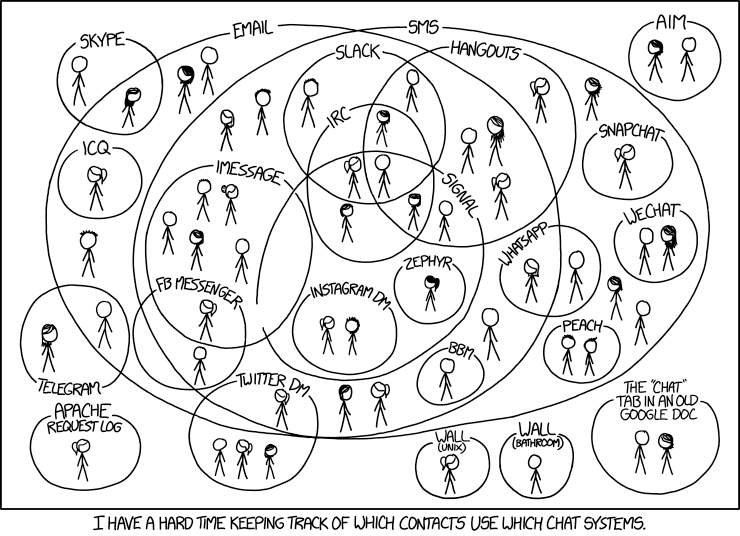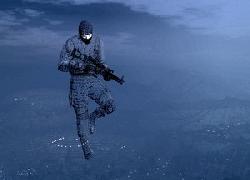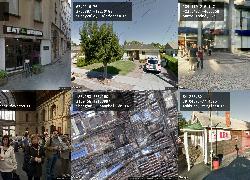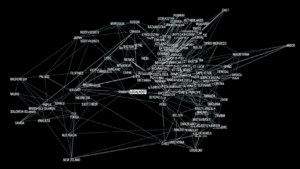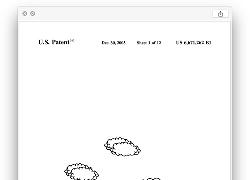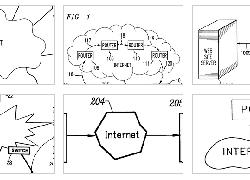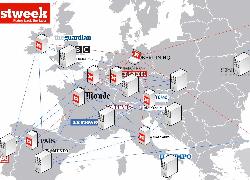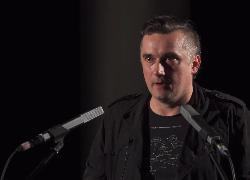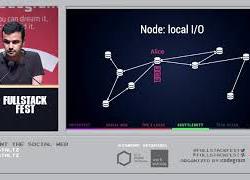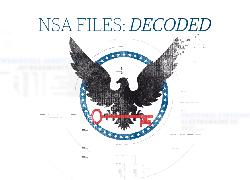Nos amiEs répartiEs selon leur chat
quelle distance entre nous ?
quelle exclusion de nos sphères sociales ?
quelle perte-division d'attention ?
quelle décentralité ?
quelle interopérabilité ?
quelle hermétique à ces réseaux_bulles ?
...
Isolation de bulles numériques
multi-canaux
attention divisée
par Ben_Grosser 2015
computational surveillance system
Tracing You presents a website's best attempt to see the world from its visitors' viewpoints. By cross referencing visitor IP addresses with available online data sources, the system traces each visitor back through the network to its possible origin. The end of that trace is the closest available image that potentially shows the visitor's physical environment. Sometimes what this image shows is eerily accurate; other times it is wildly dislocated. What can a computational system know of our environment based on the traces we leave behind? Why might it want to see where we are?
PING MAP (#2011 ...)
A DYNAMIC MAPPING OF THE GLOBAL NETWORK BASED ON ECHO TIME
PING MAP is a world map that uses network access time as its unit of measure. Whereas internet giants are gradually dominating states’ powers, information superhighways and default web portals are in the process of conditioning a new hierarchy in information flows and mapping out a landscape that is specific to the Internet. PING MAP invites us to reconsider in a poetic and technical manner the very notion of world geography in the era of the Internet, //high_frequency_trading, submarine cables and other forms of automated routing.
Set against this //digital backdrop, the main measure of distance simply becomes the transmission time between servers and terminals. The new territorial and spatial structure formed by these digital transits reconfigures the positions of the countries of the world by projecting the better connected territories to the centre of an ever denser map and by forcing the slowest, most fragile and instable territories to the edges of the map, thereby forming a connectivity ghetto of sorts.
- Echo Protocol - Wikipedia
https://en.wikipedia.org/wiki/Echo_Protocol - Round-trip delay time — Wikipédia
https://fr.wikipedia.org/wiki/Round-trip_delay_time
Internet representations extracted from the U.S. Patent database. 2019
cloud : me fait penser à :: https://liens.vincent-bonnefille.fr/?2vxoHA
By Noah Veltman
According to patent drawings, it's a cloud, or a bean, or a web, or an explosion, or a highway, or maybe a weird lump.
cloud : me fait penser à :: https://liens.vincent-bonnefille.fr/?pOZD_g
Newstweek is a device for manipulating news read by other people on wireless hotspots. Built into a small and innocuous wall plug, the Newstweek device appears part of the local infrastructure, allowing writers to remotely edit news read on wireless devices without the awareness of their users. 2011
Newstweek was developed by @Julian_Oliver and @Danja_Vasiliev ( membres du @The_Critical_Engineering_Working_Group )
// Newstweek project page: http://newstweek.com
http://web.archive.org/web/20170804214357/http://newstweek.com/
↳https://criticalengineering.org/projects/vending-private-network/ ( site )
↳https://julianoliver.com/projects/vending-private-network/ ( JOliver )
à propos de Vending Private Network VPN
In this talk, @Danja_Vasiliev gives an overview of "dark internet topologies" in the context of the commissioned piece //Vending Private Network// he did together with @Julian_Oliver ( 2018 )
Conf
Cite cette carte des câbles sous-marins :
https://www.submarinecablemap.com
Are.na ( adhoc_mesh_ntwrk )
https://www.are.na/vincent-bonnefille/adhoc_mesh_ntwrk
Membre du https://criticalengineering.org
@The_Critical_Engineering_Working_Group
2022 EDIT
- Submarine Cable Map 2015
https://submarine-cable-map-2015.telegeography.com/ - Traceroute mapper ( tool git )
https://stefansundin.github.io/traceroute-mapper/?trace=traceroute%20to%2083.118.202.51%20(83.118.202.51)%2C%2030%20hops%20max%2C%2060%20byte%20packets%0A%201%20%20livebox.home%20(192.168.1.1)%20%204.040%20ms%0A%202%20%2080.10.253.25%20(80.10.253.25)%20%209.688%20ms%0A%203%20%20*%0A%204%20%20*%0A%205%20%20ae51-0.nridf101.rbci.orange.net%20(193.252.98.94)%20%2012.098%20ms%0A%206%20%20*%0A%207%20%20*%0A%208%20%20*%0A%209%20%20*%0A10%20%20*%0A11%20%20*%0A12%20%20*%0A13%20%20*%0A14%20%20*%0A15%20%20*%0A16%20%20*%0A17%20%20*%0A18%20%20*%0A19%20%20*%0A20%20%2051.202.118.83.in-addr.arpa.celeste.fr%20(83.118.202.51)%20%2010.492%20ms%0A - History souces

Inspired by the concept of six degrees of separation, Six Degrees of Wikipedia traverses hyperlinks on Wikipedia to find the least number of clicks it takes to navigate between any of the nearly six million pages on the world's largest free online encyclopedia.
Enter the titles of two Wikipedia pages in the boxes on this site, click the "Go!" button, and discover just how connected Wikipedia really is.
Wikipedia is a registered trademark of the Wikimedia Foundation. This site is made by a fan with no affiliation to that organization.
A project by Jacob Wenger.
--
Pratique pour jouer à https://en.wikipedia.org/wiki/Wikipedia:Six_degrees_of_Wikipedia un serious_game wiki
La liste officielle de jeux :
https://en.m.wikipedia.org/wiki/Wikipedia:Wikipedia_games
Représenter les liens entre catégories de Wikipédia sous la forme d'une arborescence filaire ( autour de sujets qui m’intéressent ) dans le but de les situer en tant que disciplines.
The times we live in have made it necessary to disrupt mainstream social networks. In this talk, Andre will present Scuttlebutt, a decentralized social netwo...
https://scuttlebutt.nz/
https://ssbc.github.io/scuttlebutt-protocol-guide/#follow-graph ::
"One implementation, Patchwork, shows messages up to 2 hops out by default. Messages from feeds 3 hops out are replicated to help keep them available for others, but not directly shown in the user interface. A benefit of replicating at a greater range is that for discussion threads with lots of participants it’s more likely that the client will be able to fill in gaps where someone posted who was further than 2 hops out."
Find°me Follow°me projet_perso
dht:g47mrOB60p7zYq3TeHgmN+8sjkZ0nSolQucBftAJTsg=:@38LmdGMXsPvrQZ9TJlCqXGWgXfN5HzNIH9LO+4w2GqQ=.ed25519
maj : https://bulle.vincent-bonnefille.fr (nope, mais des news)
++
A Broadcast-Only Communication Model - Based on Replicated Append-Only Logs
via :: https://no-internet.net/
doc :: https://ccronline.sigcomm.org/2019/a-broadcast-only-communication-model-based-on-replicated-append-only-logs/
BLOB
2018 Rather than gathering information in bulk, CDR collects communications metadata of specific surveillance targets and individuals with one or two_degrees_of_separation (called “two hops”) from targets. But this newer system appears to be no more effective than its predecessor and is highly damaging to constitutional rights.
When Edward Snowden met journalists in his cramped room in Hong Kong's Mira hotel in June, his mission was ambitious. Amid the clutter of laundry, meal trays and his four laptops, he wanted to start a debate about mass surveillance.
He succeeded beyond anything the journalists or Snowden himself ever imagined. His disclosures about the NSA resonated with Americans from day one. But they also exploded round the world.
For some, like Congresswoman Zoe Lofgren, it is a vitally important issue, one of the biggest of our time: nothing less than the defence of democracy in the digital age.
cut :: https://www.theguardian.com/world/interactive/2013/oct/28/nsa-files-decoded-hops
